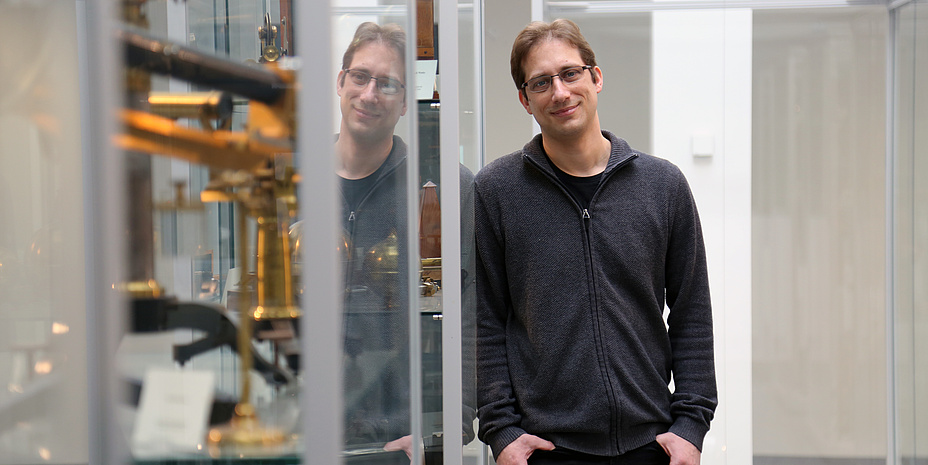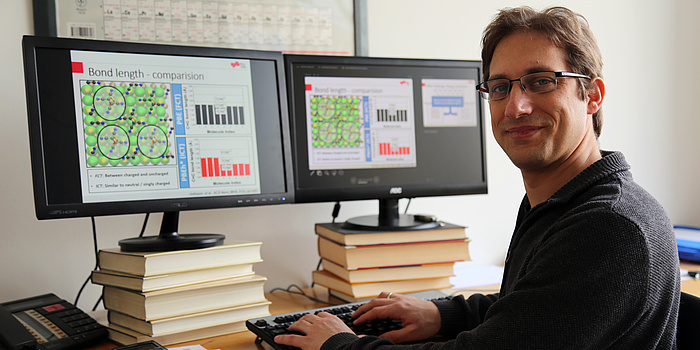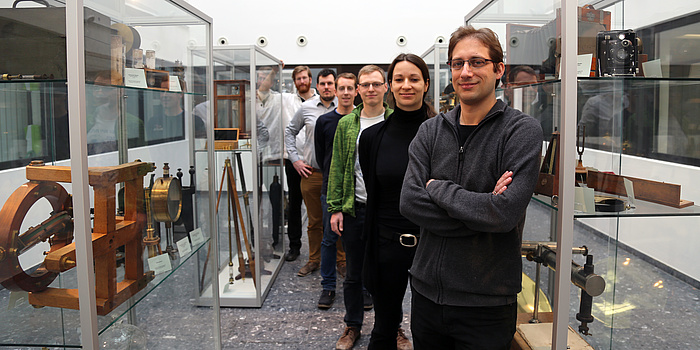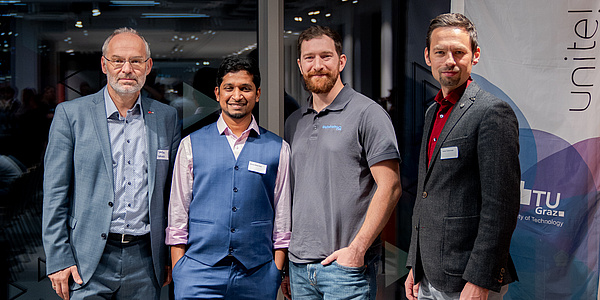Improved “energy harvest” in solar cells

Funding from the US Department of Energy
Computing time on supercomputers is expensive. One hour costs roughly one cent. The air-conditioning, in particular, is cost intensive because the computer cluster filling the room produces huge amounts of heat and has to be cooled down to provide flawless operation. “Basically, we get the very expensive air-conditioning paid for,” laughs Oliver Hofmann. Together with colleagues from Carnegie Mellon University, Duke University, Argonne National Laboratory (all in USA), the University of Potsdam and TU München (both in Germany) and Aalto University (Finland), he’s been working for several years on improving materials for solar cells in the “Materials and Interfaces for Organic and Hybrid Photovoltaics” project.
More efficient solar cells as overarching objective
Oliver Hofmann’s aim in the project is to optimise loading transfer at the surface of solar cells. Basically, a solar cell works just like the human body when it takes a medicine. When a tablet is swallowed, a substance is released in the stomach which can then be further processed. In the case of a solar cell, light strikes the material on the surface and free charge carriers are created which have to be dissolved out of the material in order to be able to continue working with it. How fast and efficient this is depends on the interface between the absorbing material and the receiving electrode. And the properties of the material depend in turn on the arrangement of the molecules on the surface. This is where Oliver Hofmann comes in. He works on a software package which simulates countless possibilities and can find the optimal structure. Experimenters thus have a reliable tool which can calculate the optimum molecular arrangement in an initial step, can say precisely what environmental conditions (temperature, pressure, etc.) are necessary in a second step, and can even simulate the precise path of the desired structure in a third step. After all, not just one step but rather a much longer sequence is necessary to get the desired structure. The physicist’s aim is not to get the software to spit out the theoretically best structure, but rather to find the most efficient structure which is practical and viable. “For example, it would be possible that the optimum structure is stable at a temperature of 5,000°C. Of course, this cannot be implemented in reality, and we have to specify several parameters for the programme,” he explains.
Future hope
That the research group is on the right track with their work is shown among other things by the fact that the funding from the USA has been allocated to the project now for the third time. The Austrian Science Fund (FWF) is also funding the research project. Furthermore, a START application will be submitted in the summer to be able to continue intensive work. Oliver Hofmann: “I’m not saying we’ll get it instantly. But we’re well on track and I think that we’ll soon find a solution to our problem.This research project is attributed to the Field of Expertise <link https: www.tugraz.at en research fields-of-expertise advanced-materials-science overview-advanced-materials-science _blank int-link-external external link in new>„Advanced Materials Science“, one of TU Graz' five strategic areas of research.
Visit <link https: www.tugraz.at en tu-graz services news-stories planet-research all-articles _blank int-link-external external link in new>Planet research for more research related news.
Kontakt
Dipl.-Ing. Dr.techn.
Institute of Solid State Physics
Petersgasse 16/II | 8010 Graz
Phone: +43 316 873 8964
<link int-link-mail window for sending>o.hofmann@tugraz.at




